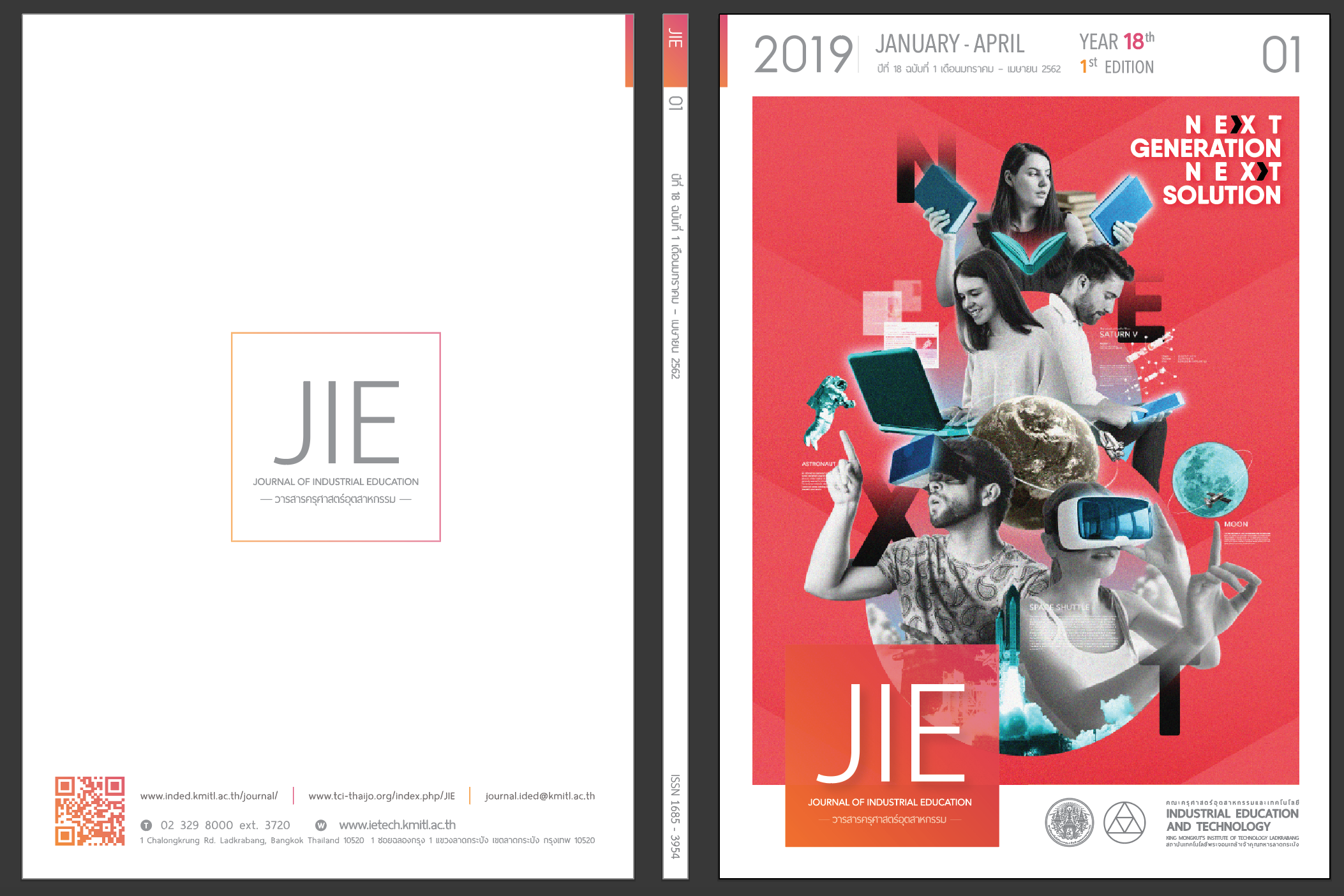THE DEVELOPMENT OF INTERACTIVE PRINTING MEDIA FOR A STUDY LEARNING ACHIEVEMENT OF SLOW LEARNER
Keywords:
interactive print media, learning achievement, slow learnersAbstract
The objectives of this research were to 1) develop interactive print media for slow learners to learn English alphabets, and 2) compare students’ learning achievement using interactive print media and flashcards, and 3) study slow learners’ satisfaction regarding the use of interactive print media for learning purpose. The sampling population consisted of six students. Purposive sampling was used for this purpose. The data needed for the study was collected during the trial use of the interactive print media between December 2017 and December 2018. The analyzing statistic was frequency, average, standard deviation.
Results from the research revealed that, based on the comparison of data collected from the two groups of students, there was a difference of learning achievement gained by these students. Learning achievement of student learning with interactive print media was higher than those who utilizing flashcards. The study also found that slow learners had a high level of satisfaction in using the interactive print media.
References
Rajanukul Institute. 2012. Slow Learner Handbook for Teacher. 1st ed. Bangkok: Beyond Publishing Retrieved February 28, 2018, from https://apps.qlf.or.th/member/UploadedFiles
Jareeluk Jiraviboon. 2002. The Development of an Instructional Reading Model for Dyslexic Students Atelementary Education Level Based on the Multisensory Approach and Themediated Instructional Approach. Doctoral Theses (Curriculum and Instruction), Graduate School, Chulalongkorn University.
Unop Rangyodjantana, Lerplak Klinhom and Paitoon Pimdee. 1997. Development of Online Systems for Assessment of Student Satisfaction with Teacher Instruction at Chachoengsao Vocational College. Journal of Industrial Education, 10 (2), p. 69.
Piriya Srisod, Neti Chaloeywares and Songsri Toonthong. 2014. Development of Training Courses on Reinforcing Skills and Mathematical Thinking Processes on The Measurement for Matthayomsuksa 2 Students. Thesis M.Ed. (Curriculum and Instruction). Thepsatri Rajabhat University
Thanita Watcharapichitchai. 2012. The Comparison of Achievement and Retention in Learning Vocabulary Words by Game and Flashcard Techniques of the Fifth Graders. Thesis M.Ed. (Curriculum and Instruction). Chanthaburi Rambhai Barni Rajabhat University.
Porntip Pariyawatid and Wichai Napapongs. Effecting Augmented Reality Code of Chinese Vocabularies Lesson for Grade 3 Students at Tessaban 2 Wattaninarasamosorn School. Academic Services Journal, Prince of Songkla University. 27 (1), pp 9-17.
Uraiwan Srichailard and Soradech Krootjohn. Development of Interactive 2D Augmented Reality Instruction Media: Earth Phenomenon and Space Technology for Grade 6 Students. Retrieved February 28, 2018, from https://sansci.ssru.ac.th/files/PROCEEDING_SANSCI__POSTER_PRESENTATION.pdf
Monchai Tiantong. 2002. Courseware design and development for CAI. 1st ed Bangkok: Department of Computer Education Faculty of Technical Education King Mongkut’s of University Technology North Bangkok.
Tarnyathep Yenrom Pongpipat Saitong Natirath Weeranakin. 2017. The Development of Multimedia English Vocabulary for The Industrial Factory by Using Keyword Method. Art and Architecture Journal. 8(1), p.82 – 97.
Supotton Sutathum and Nuttapong Ponsayum. 2016. The Development Learning Media Entitled Hardware Using Augmented Reality Technology. Retrieved February 28, 2018, from https://202.29.22.73/conf/nctim_2016/file/01/(pp9-14)-MTA-pdf
Downloads
Published
How to Cite
Issue
Section
License
"The opinions and contents including the words in papers are responsibility by the authors."
"ข้อคิดเห็น เนื้อหา รวมทั้งการใช้ภาษาในบทความถือเป็นความรับผิดชอบของผู้เขียน"



